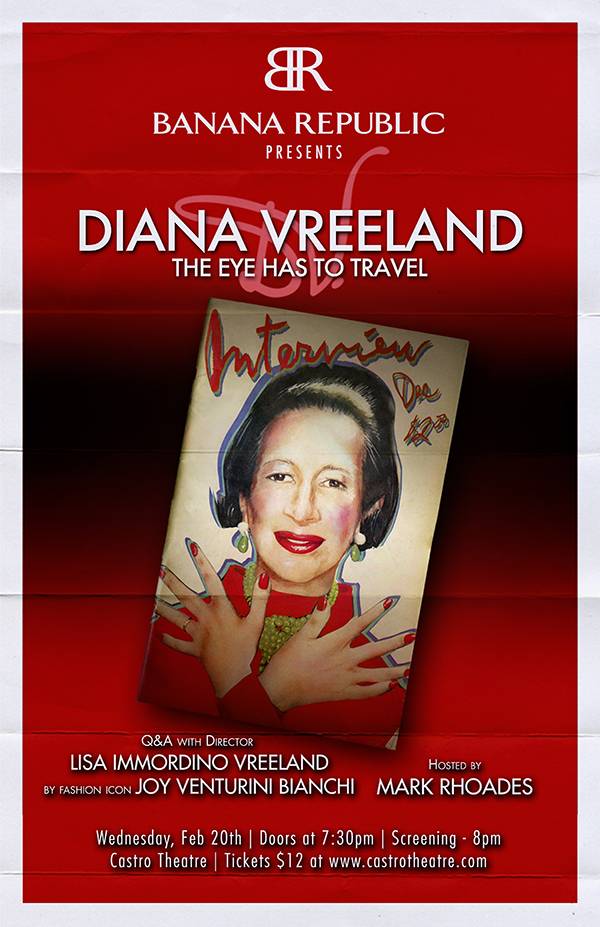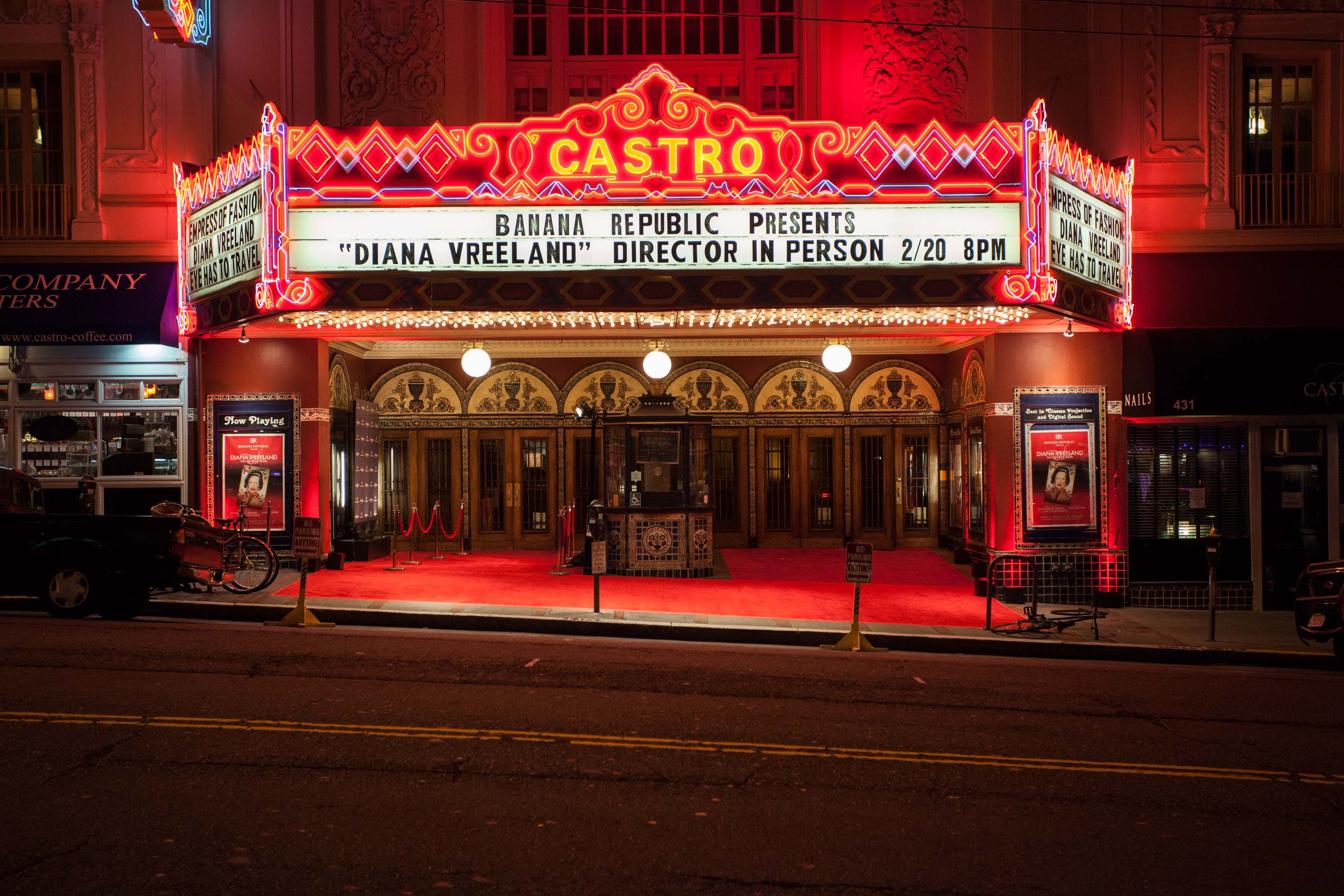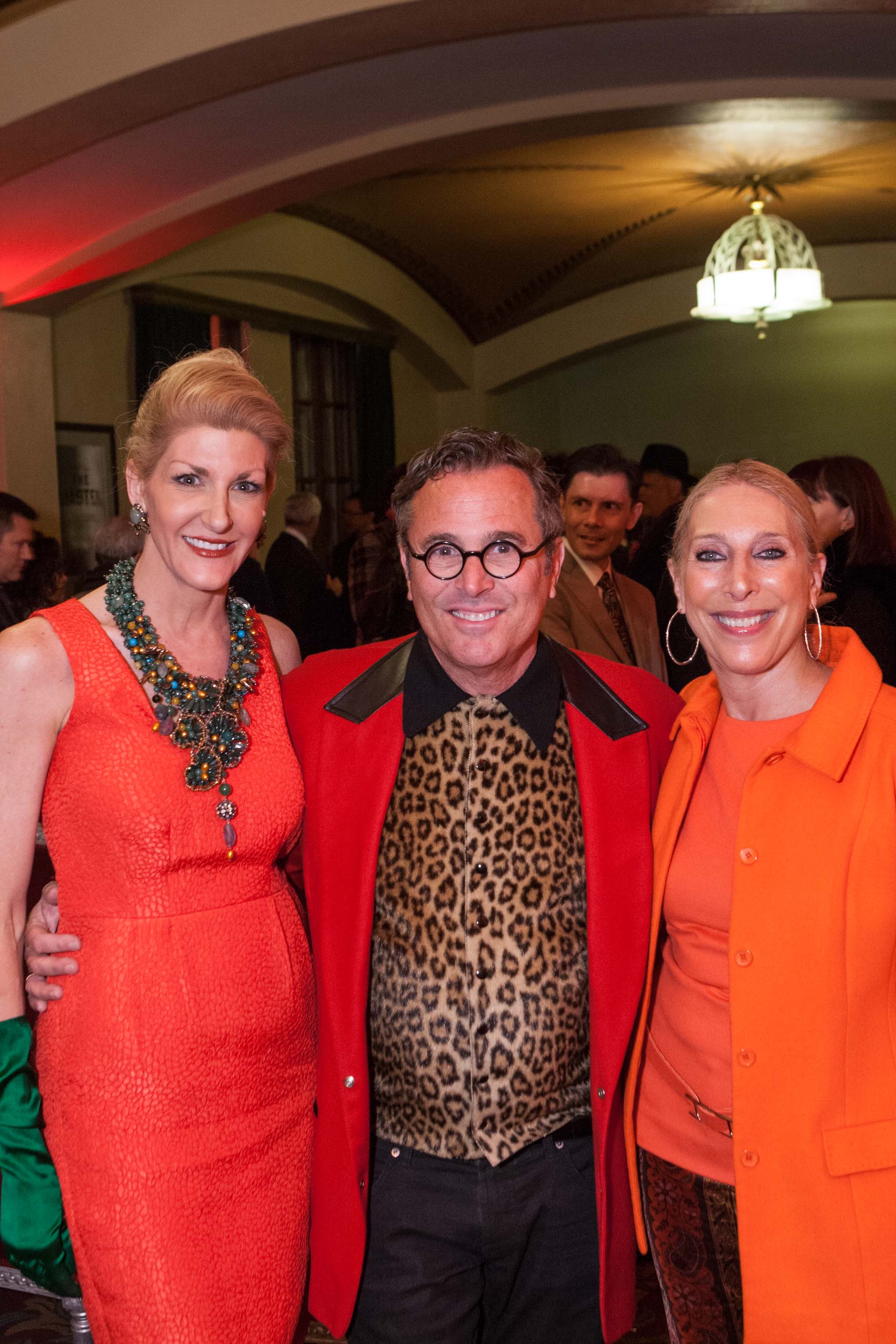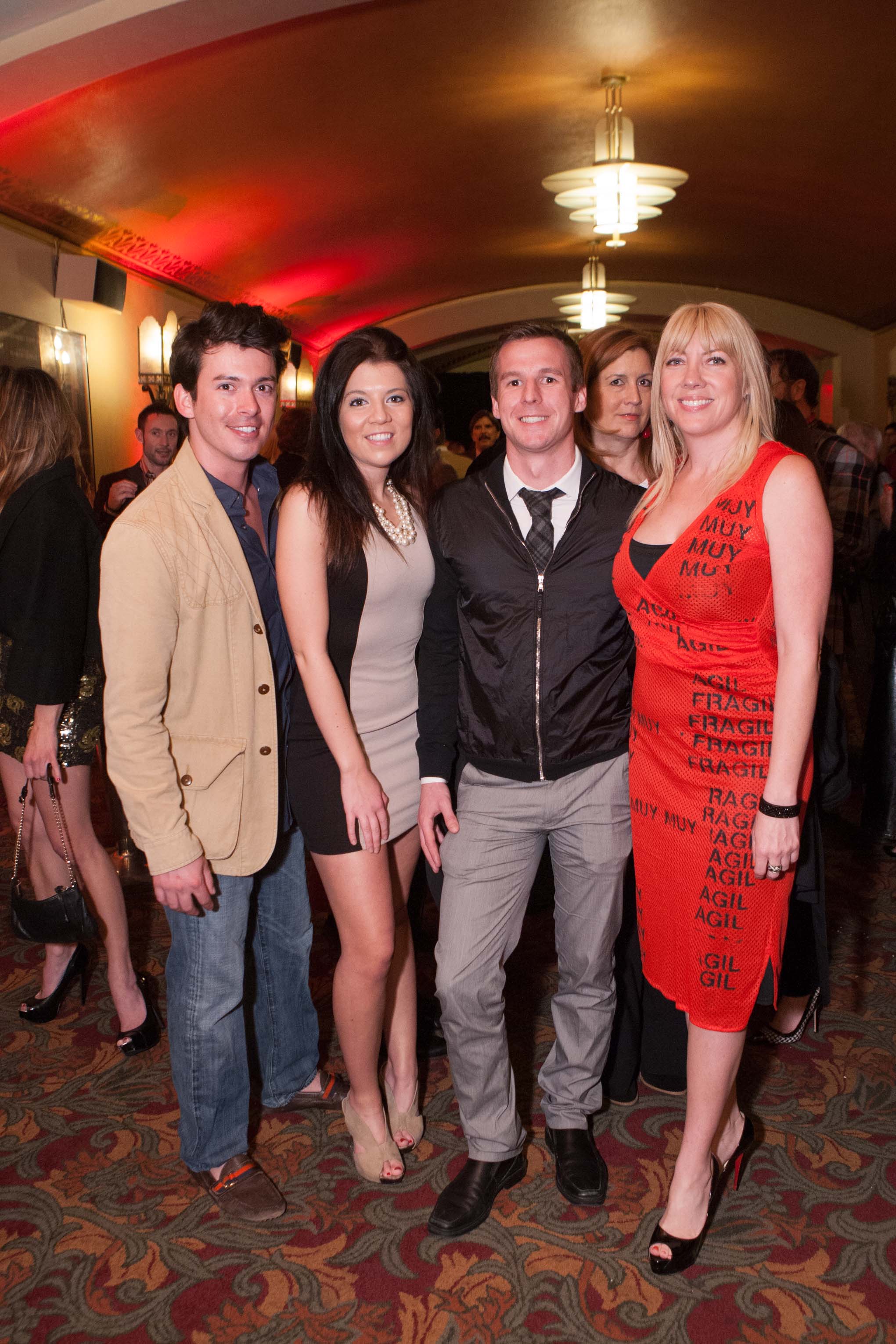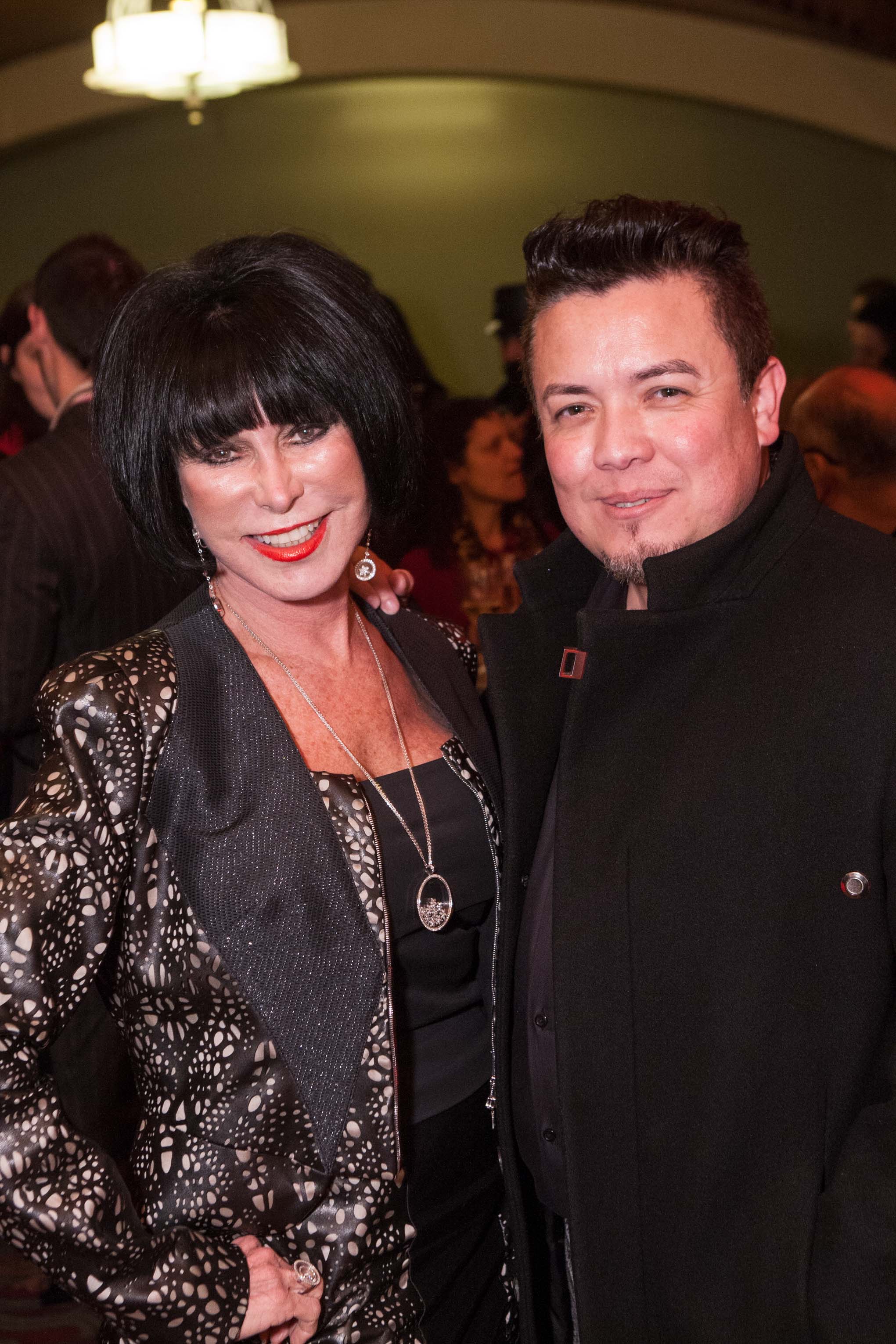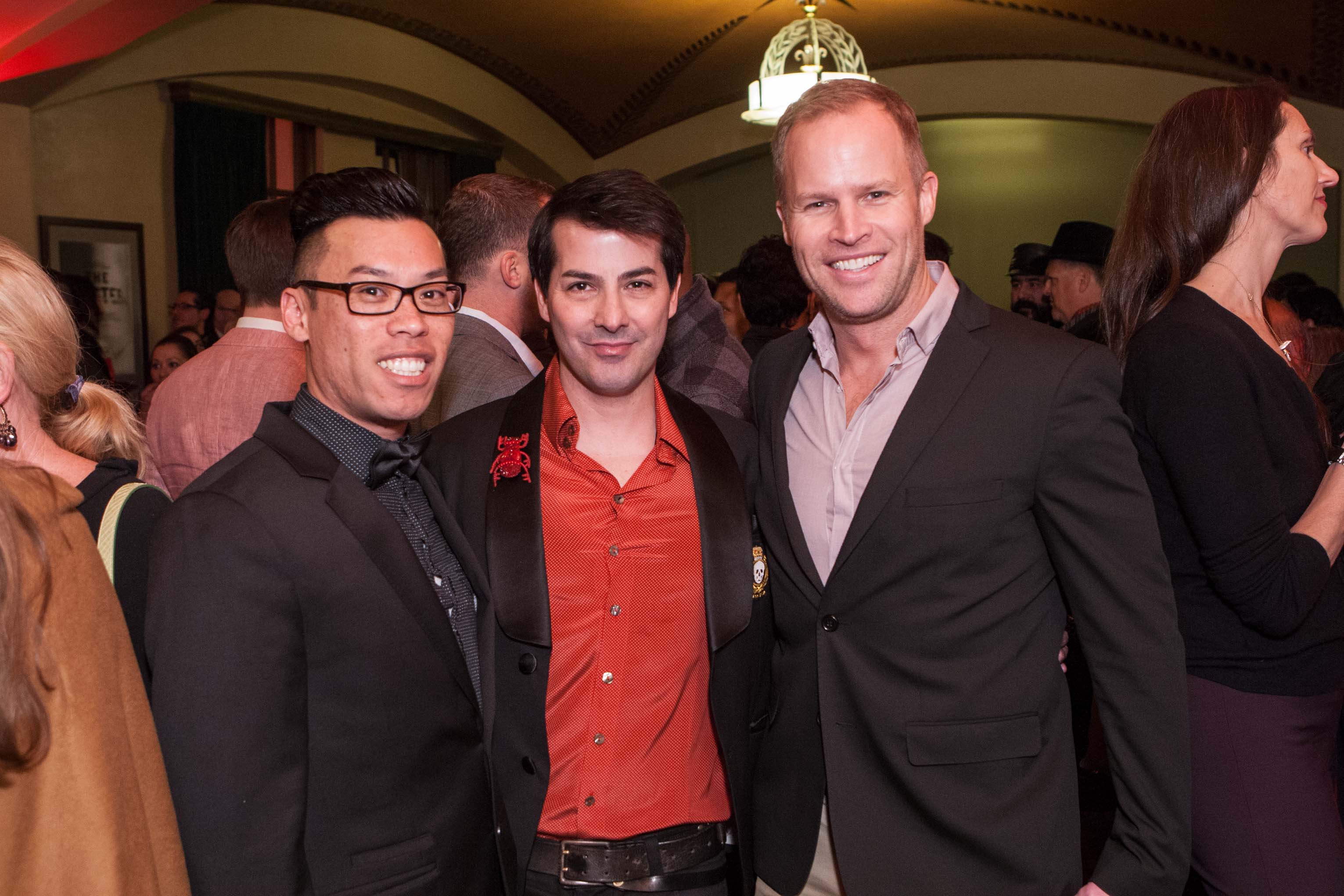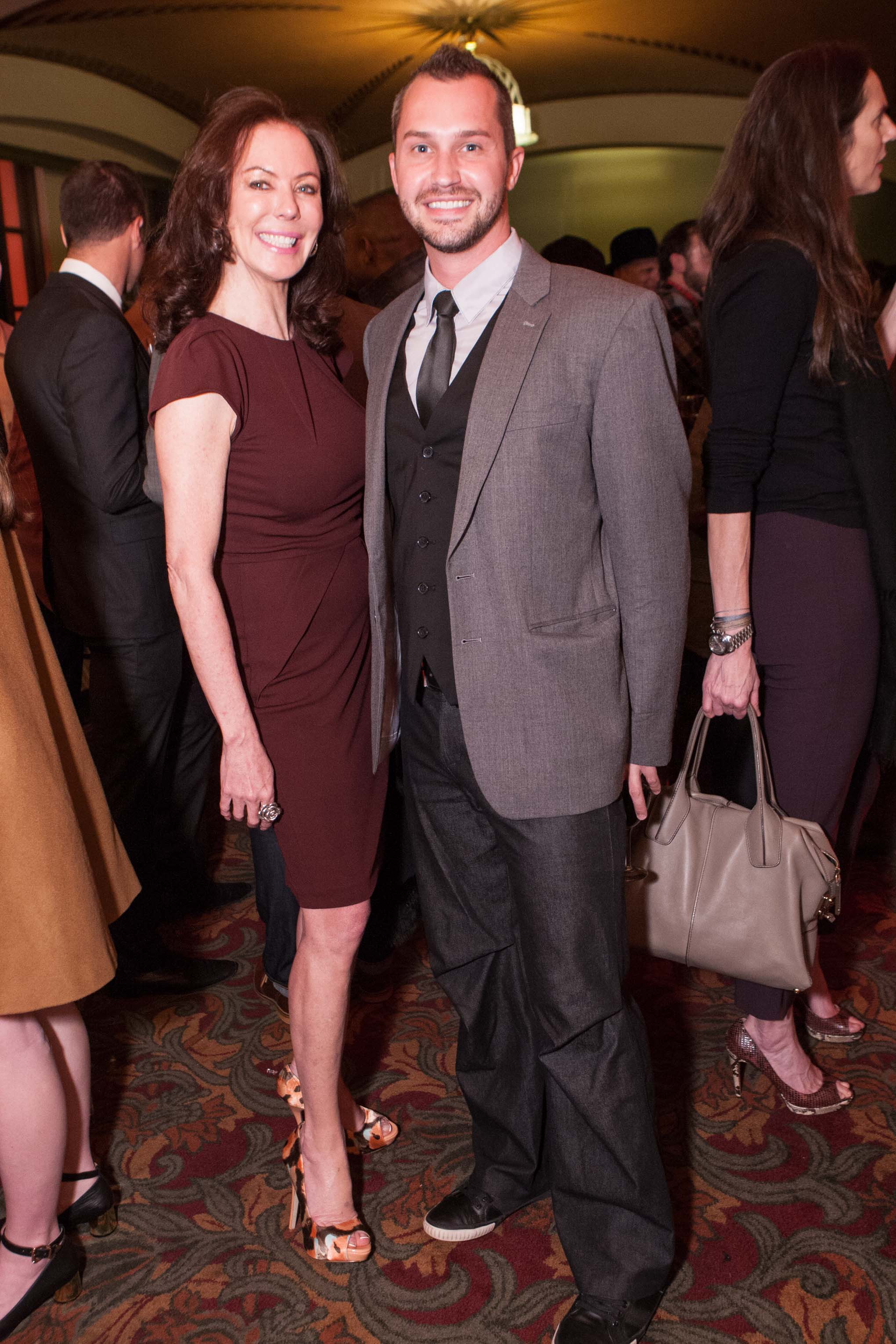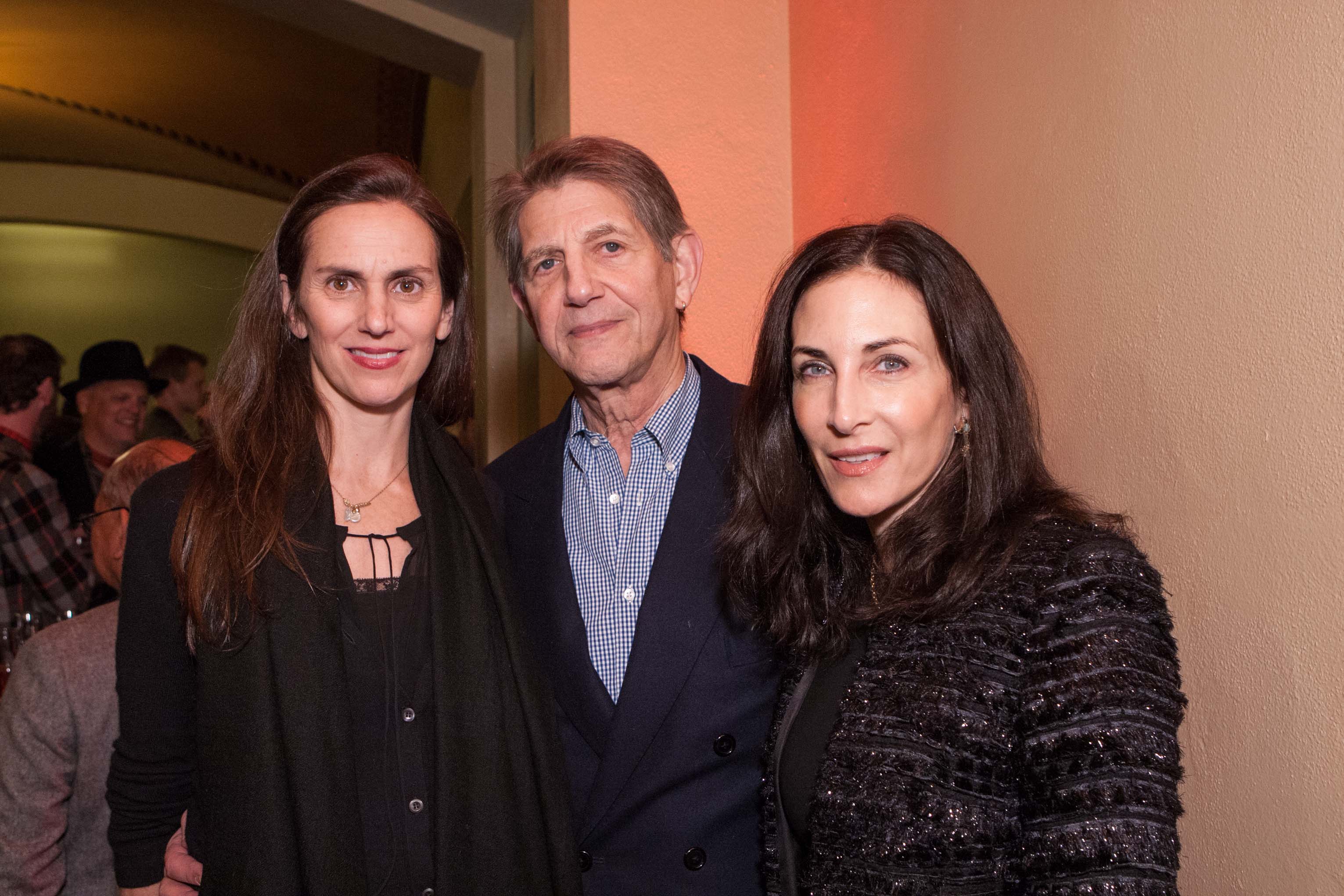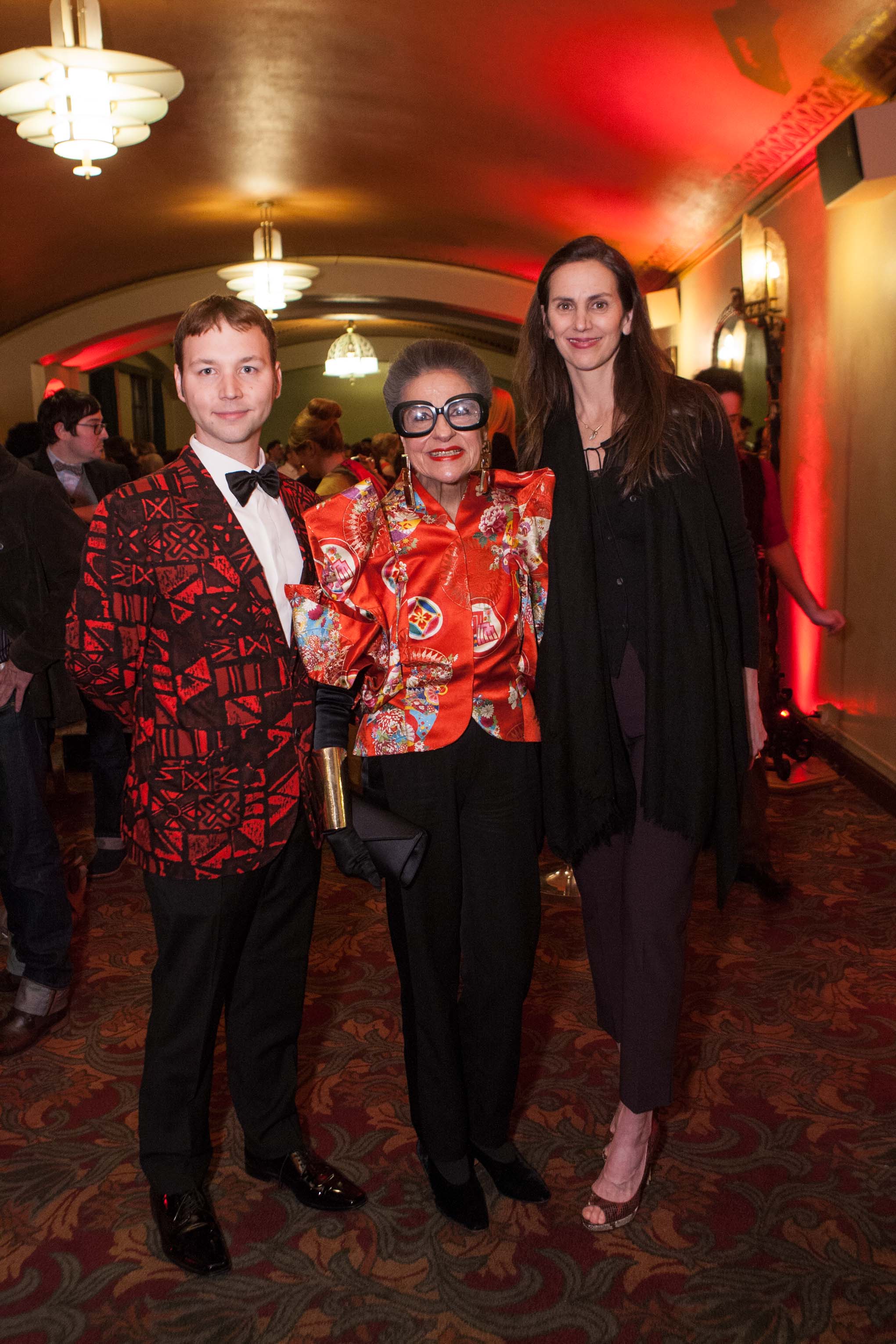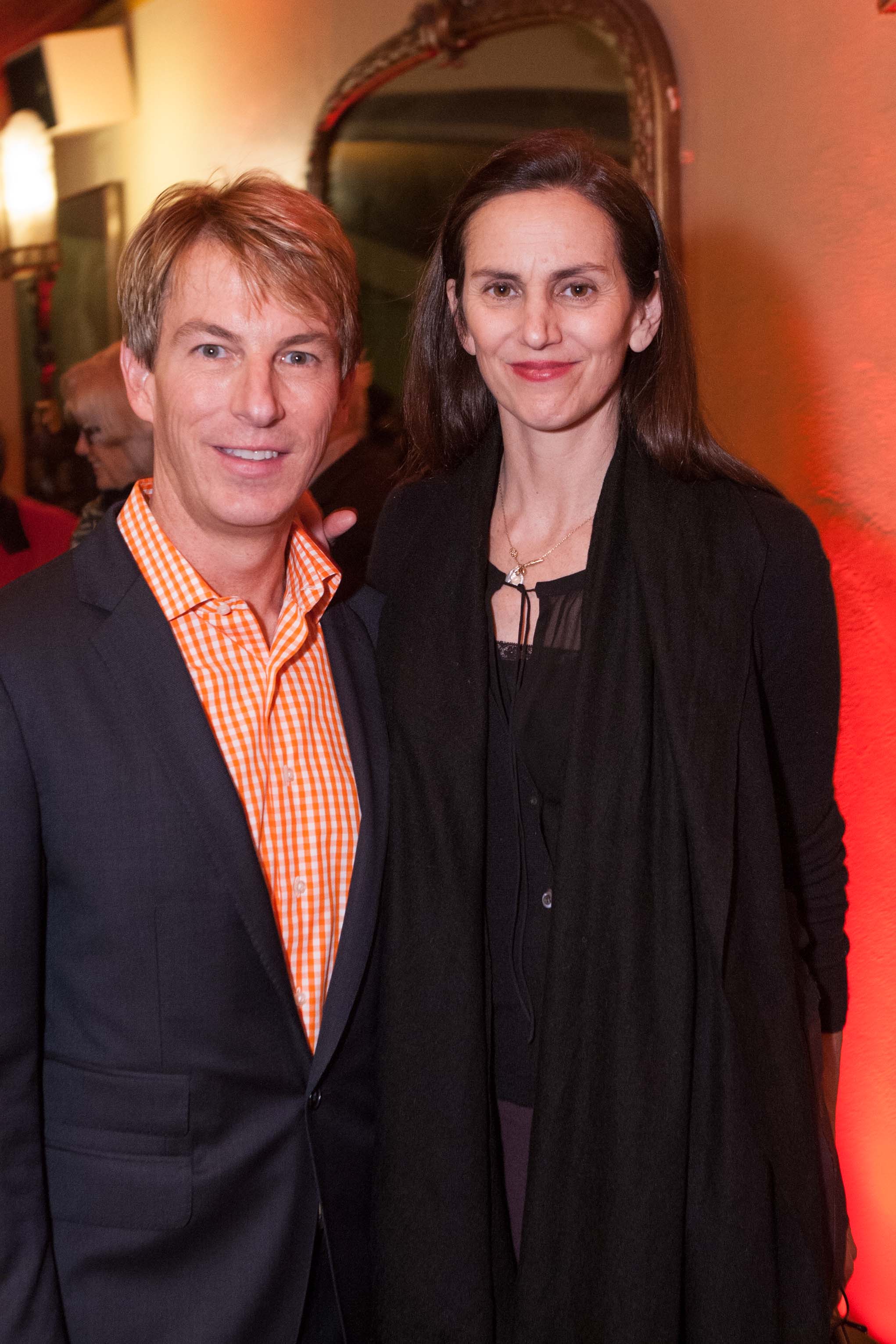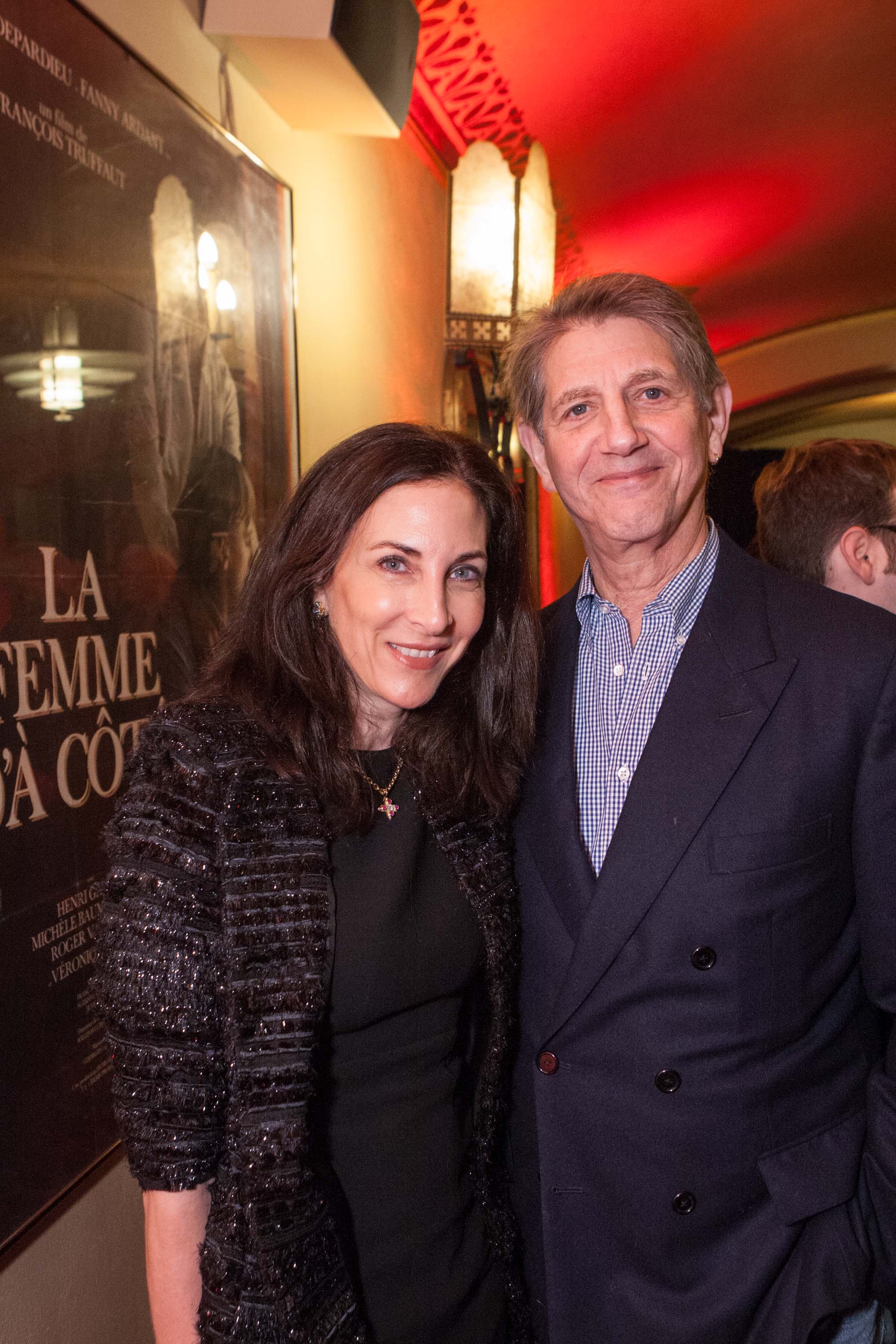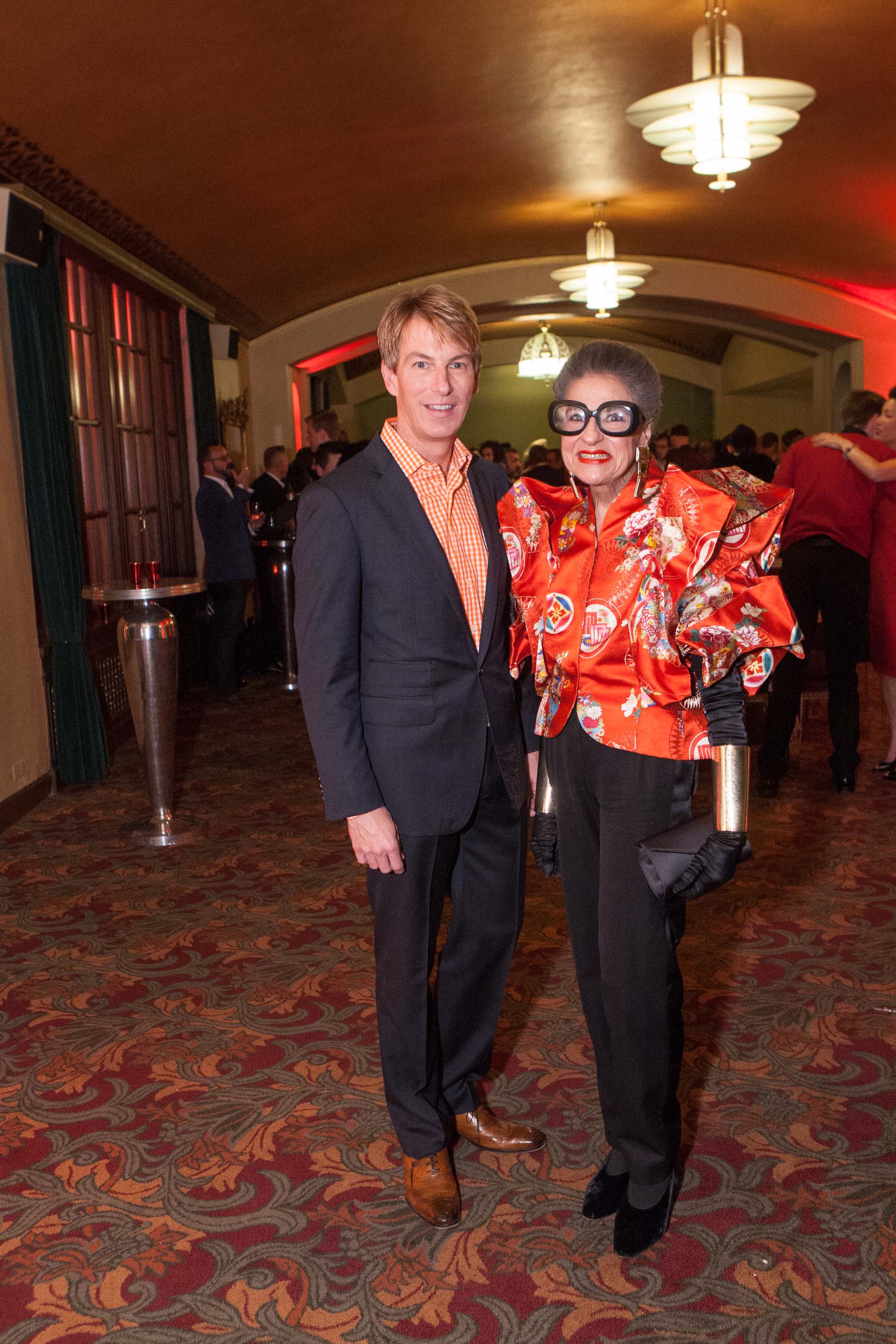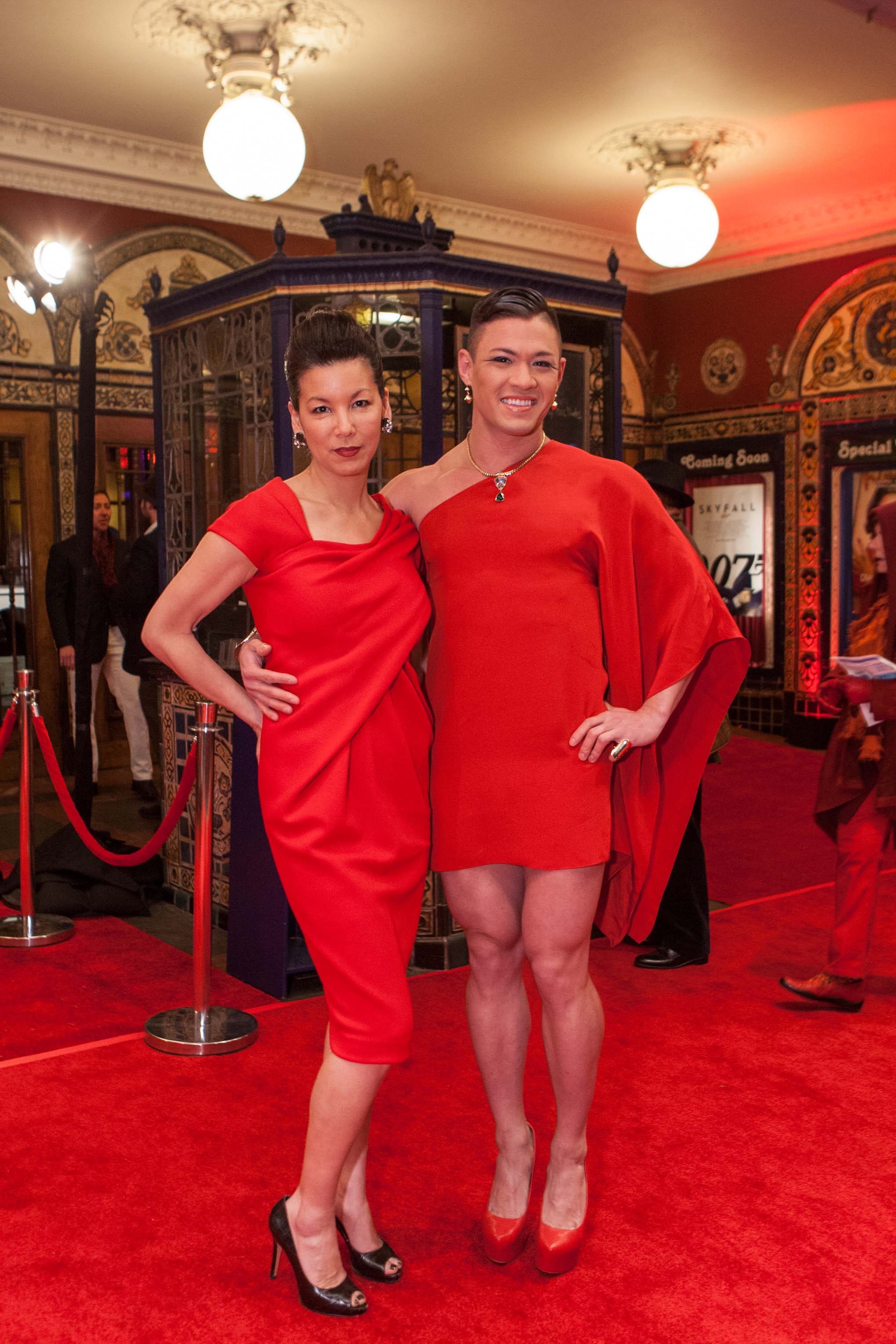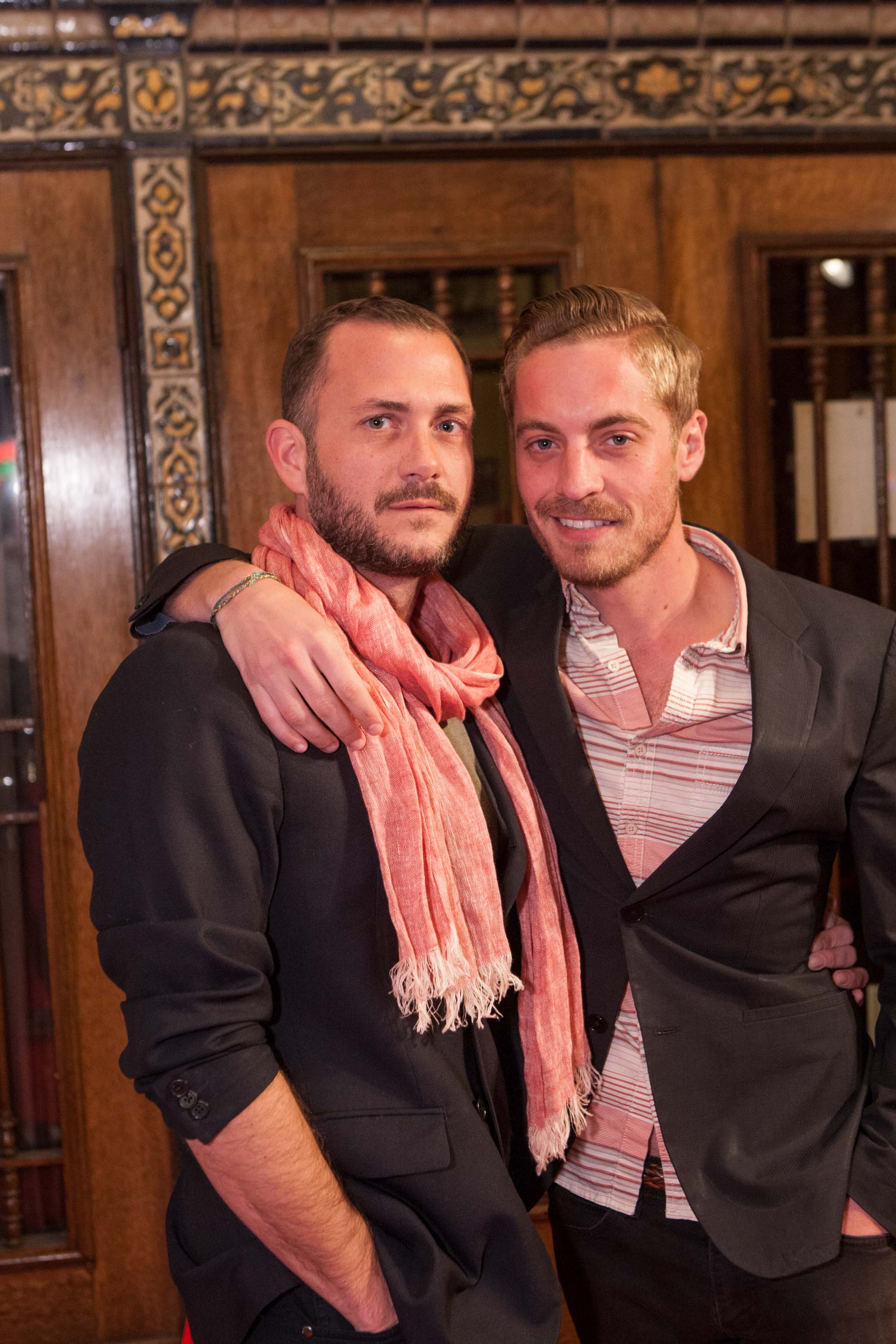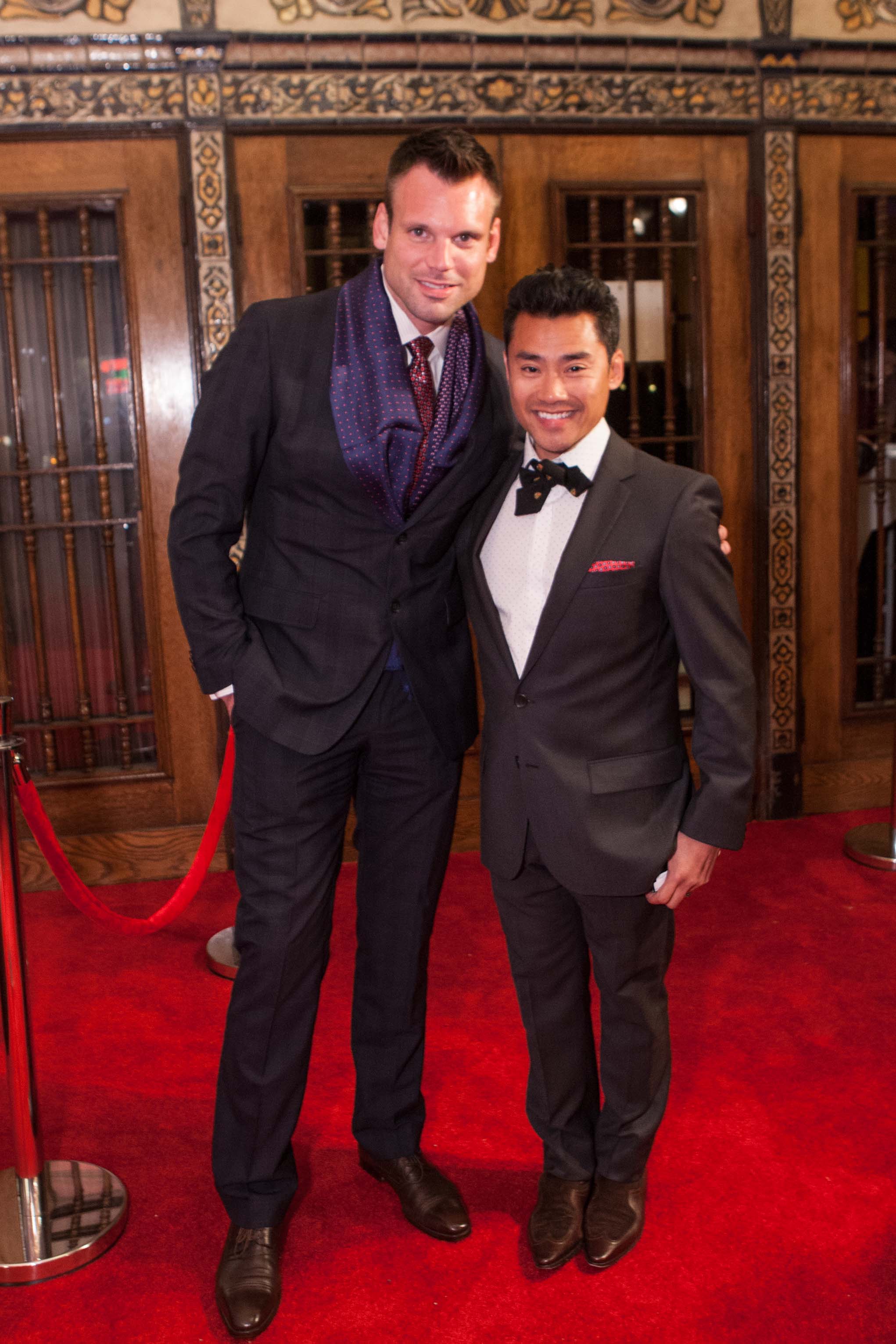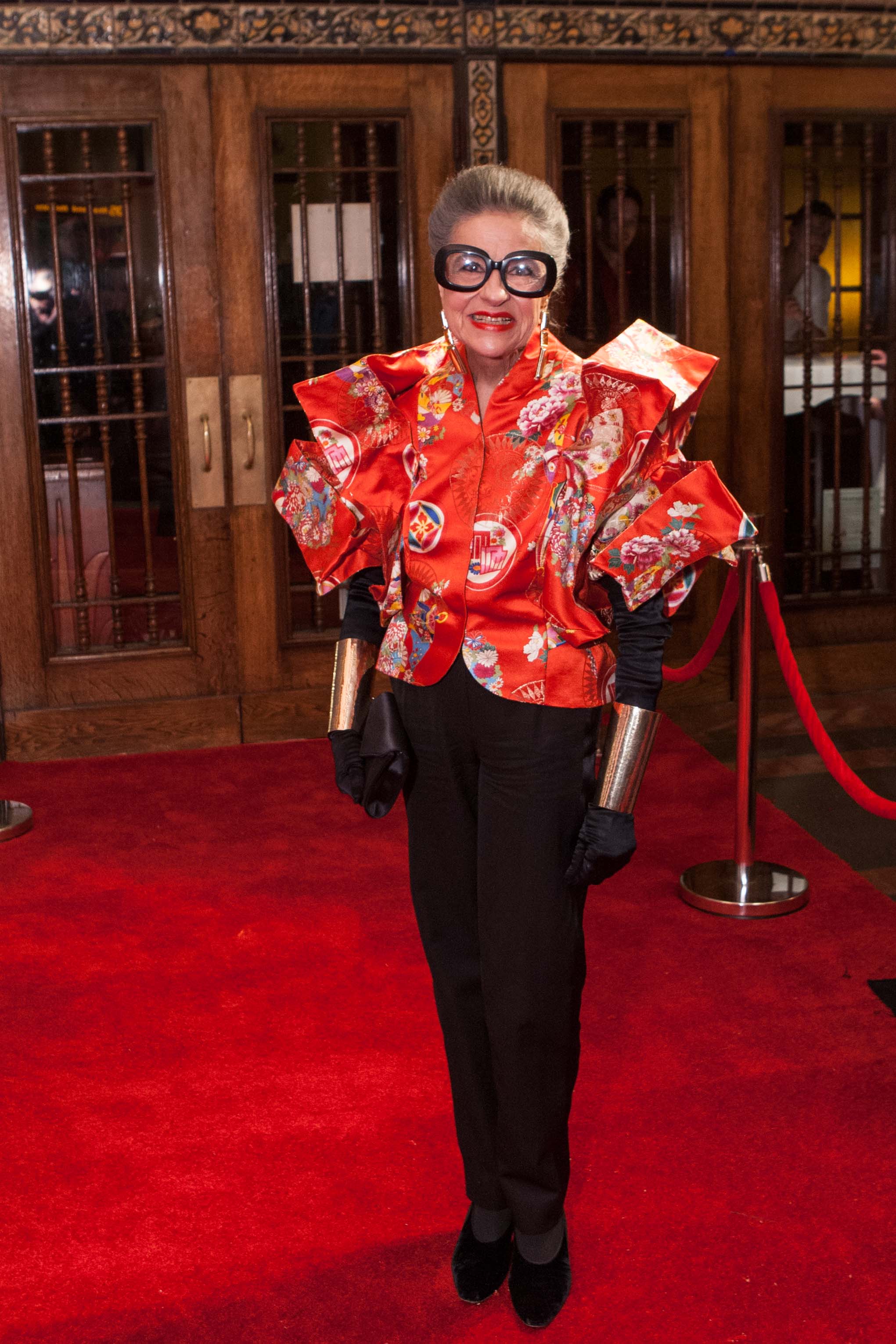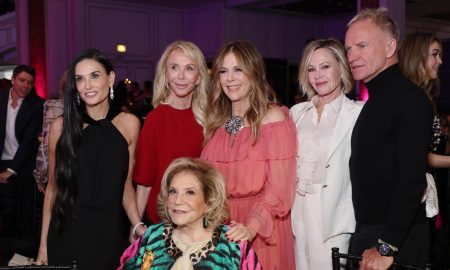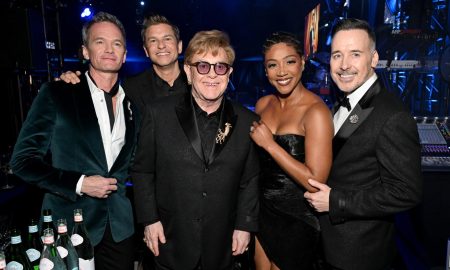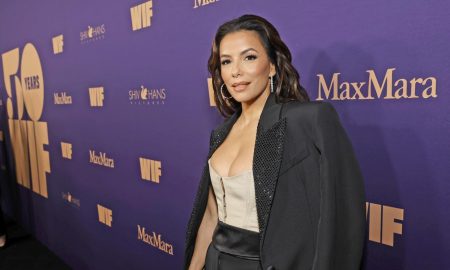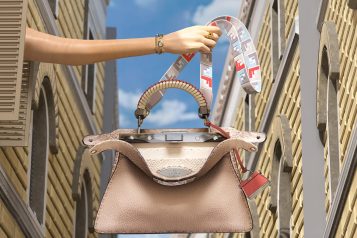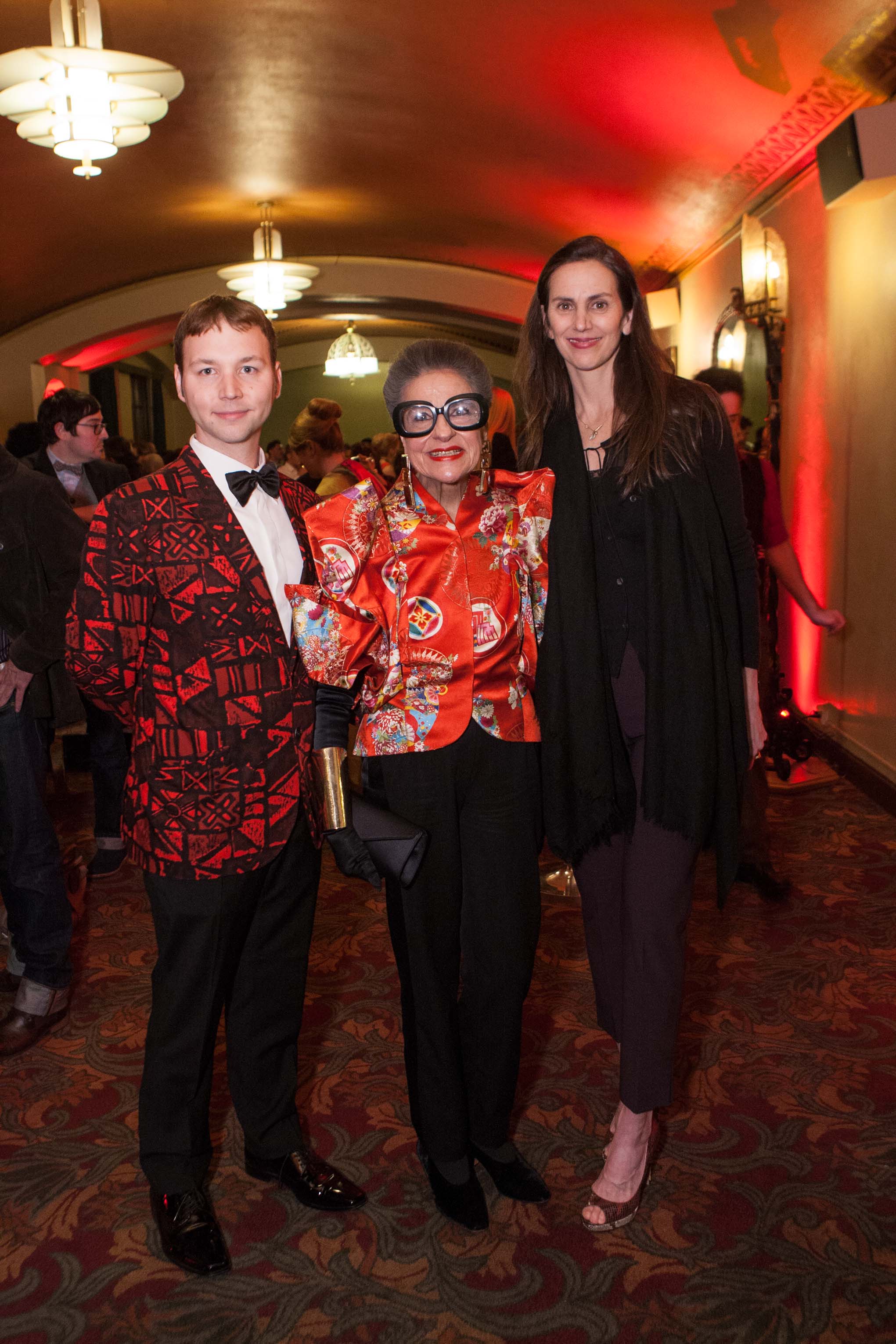
The Castro Theatre rolled out the red carpet – a fitting tribute – to celebrate one of the most influential women of the 20th century, Diana Vreeland.
Vreeland, known as the “Empress of Fashion”, enjoyed a 50-year reign in the fashion industry that included a 25-year career as Fashion Editor of Harper’s Bazaar before becoming Editor In Chief at Vogue, followed by her final act at the Costume Institute of the Metropolitan Museum of Art. Fashion’s most iconic figure has been immortalized in the film “Diana Vreeland: The Eye Has To Travel.”
The Castro screening, hosted by Mark Rhoades and sponsored by Banana Republic on Feb. 20, brought A-list style aficionados including Wilkes Bashford, Stefanie and Peter Coyote, Karen Caldwell and Christopher Collins. Guests donned red attire in honor of Vreeland’s favorite color.
The evening began with a festive cocktail party followed by the screening, then concluded with an delightful Q&A session with director Lisa Immordino Vreeland and SF Fashion icon Joy Bianchi.
Captured through the lens of her granddaughter in-law, Lisa Immortado Vreeland, the film chronicles Vreeland’s fantastical life, which revolved around fashion, big ideas and unbridled imagination.
Prior to the screening, Immortado Vreeland sat down with Haute Living for a more intimate Q&A session:
Haute Living: What was your inspiration to do this film?
Lisa Immortado Vreeland: I started this as a book project, and perhaps I didn’t know who Diana Vreeland was. I was married to her grandson (Alexander Vreeland), and I felt that she was misunderstood. I was part of this contingent of people who only saw this external strong character, the woman that you see on camera, and I wanted to know who she was. At the same time, I was taken back by this legend.
HL: Did you want to do this project before anyone else could do it?
LIV: No, not at all. I started with the book, and within a month I decided I wanted to do the film. It was very much about discovery, about the discovery of her, and about the experience of making a first film. As I developed a team, then the film developed more. We shot for over a year; we had amazing material, I found two editors, it all just sort of fell into place. It was also that people were falling in love with her.
HL: Was there a dichotomy between who she was in private and who she was in public?
LIV: When she went through hardship, it wasn’t really shown. She was a tough mother, but not necessarily present. But she had her grandsons – one was my husband – and she was very present. She was a person who could touch many walks of society. She was not an elitist, and this made a lot of people fall in love with her; it was a huge asset to what she was doing. She just lived life and loved it. Her life became her work.
HL: What did you discover about her?
LIV: I discovered her, the persona – the ultimate teacher and the ultimate story teller. It was such a wonderful discovery. She democratized fashion, she democratized information. She did it in different ways – she brought fantasy to fashion and brought it to life. I think her images from those years are the most referenced today. For me, those are my favorite personal years. She took the Vogue magazine, and totally revolutionized this magazine that had not been anything but a society magazine. She made it a world-wide magazine; she used writers and photographers and directors in the magazine. At the Costume Institue, she talked about her favorite periods of history. She broke down the real “norms”, creating these three-dimensional platforms that told history.
HL: What will you carry with you from making the film?
LIV: The woman that I discovered was so much more than I would have imagined. I think there was a positive message in the film, which is why it’s not only a film for the fashion crowd, but it’s a message about life. It’s a message about believing in yourself, and believing in things that you think you can’t achieve, and about the ability to dream and imagine. I am a big believer in that, and she just confirmed it for me.
HL: What is Diana Vreeland’s legacy?
LIV: There are multiple layers. It’s about fantasy and imagination. But It’s about making people think differently, and believing in themselves.
Like Haute Living San Francisco? Join our Facebook page or follow us on Twitter @HauteLivingSF. Want Haute Living San Francisco delivered to your inbox once a week? Sign up for our newsletter.







